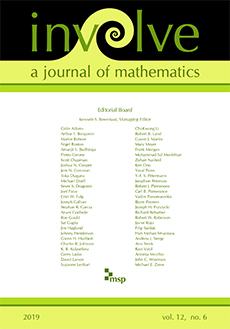Abstract
Determining how the brain stores information is one of the most pressing problems in neuroscience. In many instances, the collection of stimuli for a given neuron can be modeled by a convex set in . Combinatorial objects known as neural codes can then be used to extract features of the space covered by these convex regions. We apply results from convex geometry to determine which neural codes can be realized by arrangements of open convex sets. We restrict our attention primarily to sparse codes in low dimensions. We find that intersection-completeness characterizes realizable 2-sparse codes, and show that any realizable 2-sparse code has embedding dimension at most . Furthermore, we prove that in and , realizations of 2-sparse codes using closed sets are equivalent to those with open sets, and this allows us to provide some preliminary results on distinguishing which 2-sparse codes have embedding dimension at most .
Citation
R. Amzi Jeffs. Mohamed Omar. Natchanon Suaysom. Aleina Wachtel. Nora Youngs. "Sparse neural codes and convexity." Involve 12 (5) 737 - 754, 2019. https://doi.org/10.2140/involve.2019.12.737
Information





